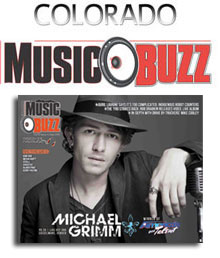Why Jazz Matters: Track 7
by Norman Provizer
In 2002, just before she turned 23, singer/pianist Norah Jones struck gold with the release of her debut disc, Come Away with Me. Fueled by the hit tune “Don’t Know Why,” the music from that inaugural CD seemed to be everywhere. It went from gold (500,000 copies sold) to platinum (1 million copies sold) on to diamond status in 2005, indicating that it sold at least 10 million copies. Today, Come Away with Me has racked up sales that total more than 26 million copies worldwide. Not bad for the daughter of famed sitar player Ravi Shankar who was born in Brooklyn and grew up with her mother in Grapevine, Texas.
While Come Away with Me struck a responsive chord with its mellow blend of country blues, folk and pop, Jones has significant jazz roots, winning student jazz awards from DownBeat magazine while in high school and working with jazz guitarist Charlie Hunter prior to her emergence as a superstar. As she frequently notes, two of the major influences on her are the great jazz pianist Bill Evans and incomparable jazz vocalist Billie Holiday. And her jazz sensibilities are apparent on Come Away (that includes appearances by jazz notables, such as drummer Brian Blade and guitarist Bill Frisell), though those sensibilities are thoroughly blended with more popular musical styles.
Among the most fascinating aspects of the mega hit produced by Jones is that the CD came out on Blue Note Records, a label completely associated with jazz that celebrates its 75th anniversary this year. In that sense, it’s tempting to say that Come Away has sold more copies than the rest of Blue Note catalogue combined has over the past 75 years.
In 1999, according to Recording Industry reports, jazz (in all its forms) represented a grand total of 3 percent of all recording sales. By 2008, that number was down to 1.1 percent of recording sales. Never have so many great and highly influential artists produced so much for so few. How else can you explain the fact that in 2009, jazz-album sales were so low that it is way too depressing to even think of that total number.
Of course, on a little brighter note, the Recording Industry Association of America (RIAA) does include eight modern-day jazz albums as certified platinum in terms of sales. So, if you are looking for the most popular jazz discs, here’s a list to consider. By far, the strongest seller is the classic Kind of Blue album by Miles Davis (with Bill Evans on piano) that is halfway between platinum and diamond. Issued in 1959, this exquisite set of music by the Miles Davis Sextet turned platinum in 2008 and continues to sell at a steady pace. It remains a great place to begin an exploration of the music.
The next three discs on the list are in the jazz-fusion vein: Herbie Hancock’s Head Hunters (released in 1973, platinum in 1986); Weather Report’s Heavy Weather (released in 1977, platinum in 1991); and pianist Hancock’s Future Shock (released in 1983, platinum in 1994). After the fusion discs, there’s Take Five by pianist Dave Brubeck and his quartet (issued in 1959, platinum in 1997).
Then there’s the five-CD compilation Ken Burns Jazz: The Story of America’s Music (connected to the Burns documentary on jazz). Interestingly enough, this compilation highlighting the development of the music turned platinum just one year after its release. This is the shortest time on record for a jazz album to hit the 1 million mark in sales. Obviously, a lot of folk have been attracted to this highly publicized, one-stop-shopping tour of the music. Along similar, if much less popular lines, Smithsonian Folkways Recordings has an outstanding, six-CD compilation of the music called Jazz: The Smithsonian Anthology – it too is a great place to begin an exploration of jazz.
The final recordings on the jazz platinum list are Louis Armstrong’s What a Wonderful World (released in 1988, platinum in 2001) and Bitches Brew by Miles Davis (released in 1970, platinum in 2003). All of this points to the simple fact that strong jazz albums at least have an incredibly long shelf life.
Earlier, I mentioned that modern-day jazz giants Brian Blade and Bill Frisell were on Norah Jones’ Come Away disc. The two of them are also part of a trio “led” by Denver-based trumpeter Ron Miles that has just released a new disc, Circuit Rider, filled with the trumpeter’s striking compositions. On October 11-12, Miles is at Dazzle with drummer Allison Miller’s Boom Tic Boom band. Also at Dazzle in October, you can find: the Jacob Fred Jazz Odyssey on the 16th and 17th; vocalist Cyrille Aimee on the 21st and 22nd; and saxophonist Dave Liebman o the 23rd and 24th.
Up at Mount Vernon Country Club in Golden, October offers visits from singer Carmen Lundy on the 8th and pianist Jacky Terrasson on the 23rd. Blues giant Otis Taylor, who lives in Denver, is at Herman’s Hideaway on the 4th and, from a different era, the Glenn Miller Orchestra is at the Paramount Theater on the 25th. Back to the present, there are groove sounds from saxophonist Karl Denson and his Tiny Universe on the 3rd and 4th at the Ogden Theater and saxophonist Maceo Parker on the 19th at Cervantes. Also, drummer Joe Russo has his Almost Dead band at the Boulder Theater on the 10th and at the Ogden on the 11th.
Category: Buzzworthy2






